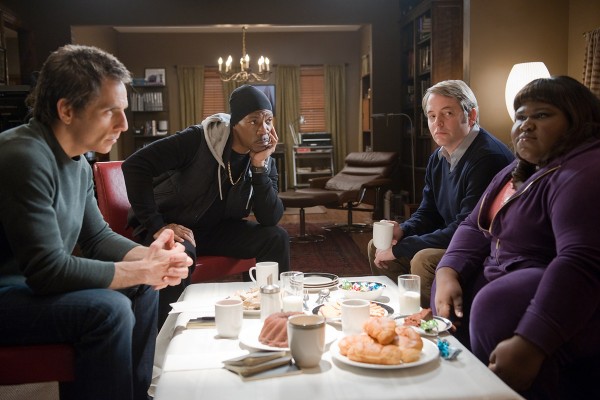David’s Movie Journal 2/6/12
I don’t generally try to make these introductory paragraphs summations of the films I’m about to discuss. This time around, though, I happen to be dealing with three movies that have at least one common theme. The films I’ll discuss today are all tales of members of a lower, neglected class banding together. The results are quite different in each of them but, given that they’re all from the year of Occupy Wall Street and the like, it’s worth noting.
House of Pleasures
Though its French title is L’Apollonide: Souvenirs de la Maison Close, Bertrand Bonello’s House of Pleasures was originally intended to have the slightly more vague but fitting title House of Tolerance. Given that House of Pleasures is likely to attract some prurient interest, the change makes some sense. Still, House of Tolerance is the more intellectually intriguing and thematically relevant name.
Beginning in 1899, the film chronicles the lives of a group of prostitutes living and working in a Parisian brothel. At the dawn of the twentieth century, we are invited to consider the relative safety of this profession. All business is above board. Men of wealth and distinction come in to indulge not only in fornication but in opium and such other things that are only “tolerated” within the protected confines of the establishment. That feeling of safety is shattered early on when one of the women is viciously attacked and disfigured while on the job. We pick up a few months later, now firmly located in the year 1900. From here, the film follows a heavily episodic format, each elegiac but bold chapter giving way to the next. Yet the ongoing tale of the scarred woman (who remains in the brothel’s employ as a laundress and an extra hand) persists, running underneath most of the running time and giving us a framework within which to interpret the film. With her looks marred, is she worth less as a person than before? Or, perhaps, does her freedom from objectification empower her? Of course, neither of these is the case and it’s to the film’s great credit that the nuanced, sprawling and indefinable categories of gender, autonomy, power, desire, beauty and many, many more are explored without a true conclusion ever being drawn.
This film will feel bizarre to many. At times, it certainly is. It’s dreamlike in some ways but with a physical presence that is firmly elucidated, tactile almost to the point of tangibility. There is, of course, a copious amount of sexual content, more frank than erotic. What violence there is in the film is shocking and unforgiving. There’s also a panther. And at the film’s climax, there is a image that I won’t dare describe to you here. Not only would it be a bit of a spoiler but to merely have it explained out of context would elicit either laughter or disgust. But House of Pleasures earns its bizarreness at every turn.
Attack the Block
Joe Cornish’s Attack the Block could glibly be referred to as one of the internet’s favorite movies of 2011. Now, last year, that same demographic embraced Edgar Wright’s Scott Pilgrim Vs. the World, another British comedy genre mash-up. They were right to do so. Scott Pilgrim remains one of the most exciting and formally progressive films to come from a major studio in years. On the other hand, web denizens also rallied behind Christopher Nolan’s 2 ½ hour dull headache of a faux-cerebral slog, Inception. And Attack the Block’s more current rival is Nicolas Winding Refn’s Drive, a very pretty film that is inert to the point of accidental comedy.
All that is to say, I sat down to watch Attack the Block with some ambivalence. Luckily, the internet got it mostly right this time. Cornish’s directorial debut avoids the nostalgic traps of hip, post-modern pop culture and focuses on telling its own, very contemporary story, as well as possible. It is very funny and very exciting. It’s also enough fun for you to not only forgive its mistakes but to indeed embrace them as part of the homemade, slapdash tapestry.
Like the best genre films, though, there’s a point to all this. Cornish uses the format to make a statement about the similarities and the differences among the proletariat. The former are what make them a powerful force. The latter are what make them human.
One thing doesn’t work, though. It’s traditional, in these kinds of movies, to have a human antagonist in addition to the monster one. Think Paul Reiser in Aliens. There’s one here but he simply never works as a character. His rage is inexplicable and his willful ignorance of the extraterrestrial threat continues beyond the point of believability. It’s a weak spot that can largely be ignored but that will still keep Attack the Block out of my top ten.
Tower Heist
Going into Tower Heist, I’d only seen two of director Brett Ratner’s previous films, Rush Hour and After the Sunset. I found both to be essentially forgettable, short on imagination and constructed with only a passable degree of competence. I make this clear so that when I say I enjoyed Tower Heist, you understand to what I’m comparing it.
With Ratner at the helm and a story/screenplay credited to no fewer than four different people, a watered-down product was to be expected. However, Tower Heist manages to avoid coming across as something that was exhaustively test-screened and reshaped by too many cooks who don’t know their way around a kitchen. The test-screening process often results in the emphasis of particular moments over the work as a whole. This moment tested well; this one didn’t. What Ratner’s newest manages is actual consistency, a fundamental trait sorely lacking from most studio films of this size.
Ratner doesn’t waste time going down blind alleys simply to let his stars mug (and with Eddie Murphy and Ben Stiller starring, mugging was a definite threat). Practically every scene in the film has something to do with the story. More importantly, the characters themselves remain consistent. Their financial struggles and their resentment at the insouciant cruelty of the upper class toward them are their motivation. These facts of their lives are never abandoned or replaced for the benefit of a joke.
There are plenty of problems, most of them having to do with physics and logistics. But that consistency once again helps. The fact that there’s no way an elevator can support the weight of an entire car as well as eight people and a dog glares less when it’s the only thing you’re objecting to. Only one major objection for a Brett Ratner film is a pretty big improvement for me.































